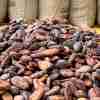Science This Week | IISc scientists discover 600-million-year-old ocean water from Himalayas, frozen microbes are coming back to life and more Premium
The Hindu
Check out The Hindu’s science wrap featuring top stories on new discoveries, findings, and studies in the scientific world from this week.
From figuring out why the universe exists to how ants know how much food their colony needs, here are this week’s top findings and discoveries from the field of science.
A recent study found that the Subaru telescope’s new measurement of the amount and type of helium in faraway galaxies may offer a solution to the long-standing mystery of matter-antimatter asymmetry problem. Last year, the Subaru Collaboration – a group of Japanese scientists working on the Subaru telescope – released data on 10 galaxies far outside of our own that are almost exclusively made up of hydrogen and helium. Using a technique that allows researchers to distinguish different elements from one another based on the wavelengths of light observed in the telescope, the Subaru scientists determined exactly how much helium exists in each of these 10 galaxies. Importantly, they found less helium than the previously accepted theory predicted.
Scientists have discovered droplets of water trapped in mineral deposits in the Himalayas that were likely left behind from an ancient ocean which existed around 600 million years ago. The study conducted by scientists of IISc and Niigata University, Japan, shows that the 600-million-year-old ocean water from the Himalayas can provide the evolution of oceans, and even life, in Earth’s history. Exposures of such marine rocks in the Himalayas can provide some answers on palaeo oceans, the institute said.
Studies that test some physical property to an extreme precision are gaining in popularity these days because many physicists are intently looking for small chinks – too small for them to have noticed without a closer look – in a theory that is both powerful yet incomplete. A new study used a strong electric field in the molecule hafnium fluoride to measure the electric dipole moment of its valence electrons, and concluded by finding no evidence of ‘new physics’. This result precludes the existence of certain hypothetical particles and will help build future particle colliders.
The interim results of a randomised phase-3/4 trial carried out in India to evaluate the safety and effectiveness of an all-oral, short-course treatment using just three drugs for people with pre-XDR TB or treatment intolerant/non-responsive MDR pulmonary TB appears promising. The trial uses just three drugs — bedaquiline, pretomanid and linezolid (BPaL) — and the treatment lasts only for 26 weeks, in contrast to eight-nine tablets each day for 18 months in the case of conventional treatment for drug-resistant TB. Nearly 70% of the 400 trial participants have so far completed the treatment lasting for 26 weeks and the cure rate is well above 85%, the study said.
Scientists have revived a worm that was frozen 46,000 years ago. The roundworm, of a previously unknown species, survived 40 metres (131.2 feet) below the surface in the Siberian permafrost in a dormant state known as cryptobiosis, according to Teymuras Kurzchalia, professor emeritus at the Max Planck Institute of Molecular Cell Biology and Genetics in Dresden and one of the scientists involved in the research. Organisms in a cryptobiotic state can endure the complete absence of water or oxygen and withstand high temperatures, as well as freezing or extremely salty conditions. They remain in a state “between death and life,” in which their metabolic rates decrease to an undetectable level.
Recently, scientists found remarkable genetic compatibility between viruses isolated from lake sediments in the high Arctic and potential living hosts. In a new study published in the journal PLOS Computational Biology, scientists calculated the ecological risks posed by the release of unpredictable ancient viruses. Earth’s climate is warming at a spectacular rate, and up to four times faster in colder regions such as the Arctic. Estimates suggest four sextillion (4,000,000,000,000,000,000,000) microorganisms to be released from ice melt each year. The simulations show that 1% of simulated releases of just one dormant pathogen could cause major environmental damage and the widespread loss of host organisms around the world.













